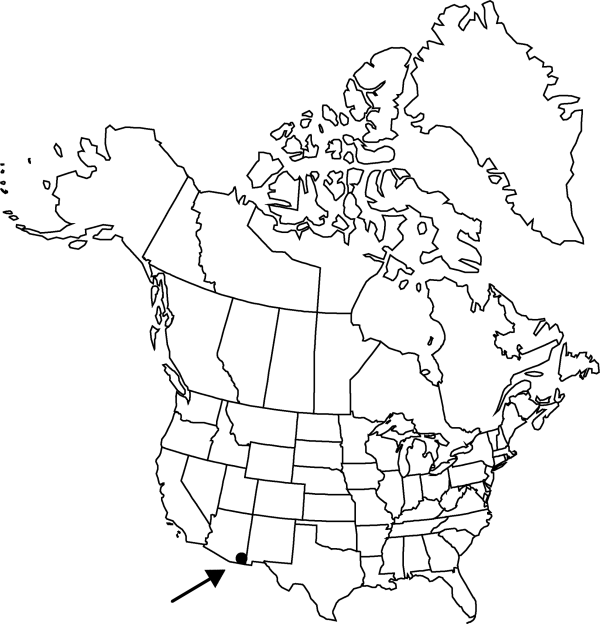Difference between revisions of "Atriplex torreyi var. griffithsii"
Amer. Midl. Naturalist 55: 205. 1956.
Common names: Griffiths’ saltbush
Basionym: Atriplex griffithsii Standley in N. L. Britton et al., N. Amer. Fl. 21: 63. 1916
Synonyms: Atriplex lentiformis subsp. griffithsii (Standley) H. M. Hall & Clements Atriplex lentiformis var. griffithsii (Standley) L. D. Benson
Treatment appears in FNA Volume 4. Treatment on page 378.
FNA>Volume Importer |
FNA>Volume Importer |
||
| Line 8: | Line 8: | ||
}} | }} | ||
|common_names=Griffiths’ saltbush | |common_names=Griffiths’ saltbush | ||
| − | |basionyms={{Treatment/ID/ | + | |basionyms={{Treatment/ID/Basionym |
|name=Atriplex griffithsii | |name=Atriplex griffithsii | ||
|authority=Standley | |authority=Standley | ||
| + | |publication_title=in N. L. Britton et al., N. Amer. Fl. | ||
| + | |publication_place=21: 63. 1916 | ||
}} | }} | ||
|synonyms={{Treatment/ID/Synonym | |synonyms={{Treatment/ID/Synonym | ||
| Line 57: | Line 59: | ||
|publication year=1956 | |publication year=1956 | ||
|special status= | |special status= | ||
| − | |source xml=https://jpend@bitbucket.org/aafc-mbb/fna-data-curation.git/src/ | + | |source xml=https://jpend@bitbucket.org/aafc-mbb/fna-data-curation.git/src/f6b125a955440c0872999024f038d74684f65921/coarse_grained_fna_xml/V4/V4_750.xml |
|genus=Atriplex | |genus=Atriplex | ||
|subgenus=Atriplex subg. Pterochiton | |subgenus=Atriplex subg. Pterochiton | ||
Revision as of 21:02, 24 September 2019
Plants mainly 3–10 dm; branchlets slender, striately angled, not spiny. Petiole 1–2 mm. Pistillate flowers borne in panicles 5–20 cm. Fruiting bracteoles subreniform, mainly 3–4(–4.5) × (3.5–)5–6 mm. Seeds 1.4–1.9 mm wide.
Phenology: Flowering spring–winter.
Habitat: Saline flats
Elevation: 1200 m
Discussion
The leaves of Atriplex torreyi var. griffithsii are thick, with rounded edges, the staminate glomerules are beadlike, 2–3.5 mm thick in interrupted spikes borne in terminal, leafy-based panicles.
Selected References
None.
Lower Taxa
None.
